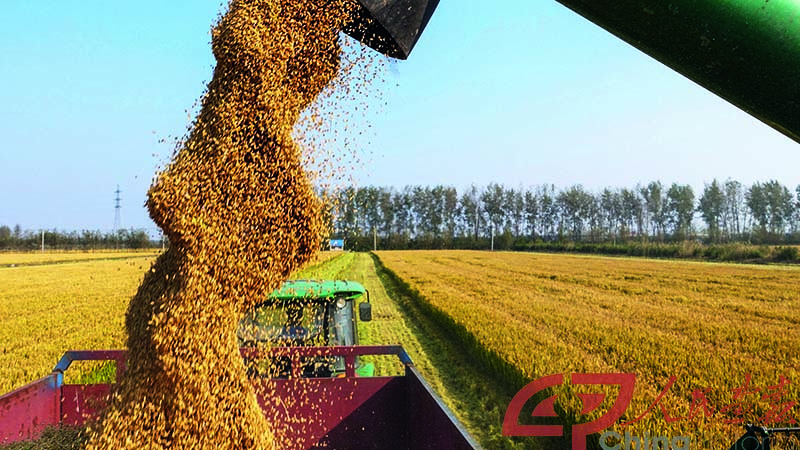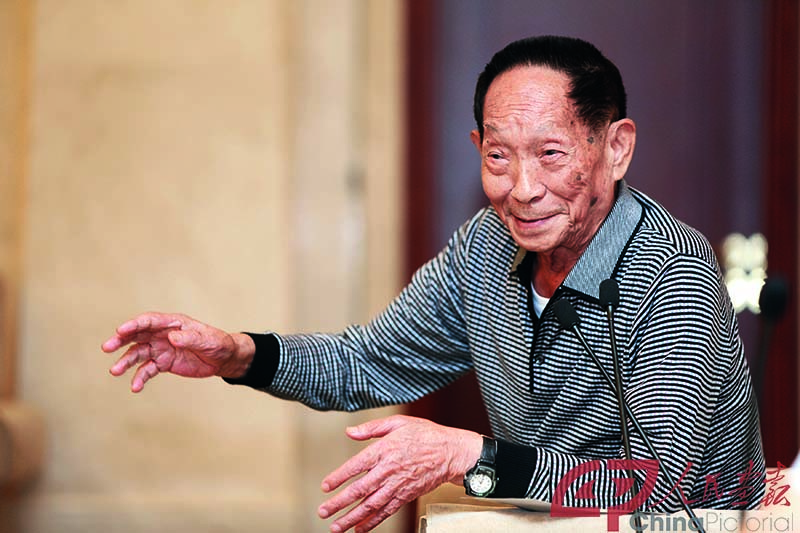Super Rice

Grain has remained close to human civilization since the first people settled down to practice farming. Rice, one of the most eaten staple foods in the world, feeds over half of the global inhabitants, including 60 percent of China’s population. As the world’s earliest rice planting country, China has practiced rice plantation for nearly 7,000 years, and today rice accounts for nearly 50 percent of its total grain crop output. Numbers from the State Statistics Bureau show that in 2015, China produced a total of 208.25 million tons of rice, 193.1 million tons of which were consumed, and the country imported 3.37 million tons from abroad.
The role of rice, the “greatest force” in grain, is important to China and the whole world.
Breeding “Super Rice”
April 13, 2017 was a special day for rice. At the 1st International Forum on Rice in Sanya, China, Yuan Longping, an academician of the Chinese Academy of Engineering, announced that Chinese rice was “approaching the target, at 90 percent, of producing 1,130 kilograms per mu or 17 tons per hectare.”
China started the research of breeding super-high yield rice in the mid-1980s, a period in which Guangdong Academy of Agricultural Sciences, Shenyang Agricultural University, and China Rice Research Institute all contributed encouraging work. In 1996, China’s Ministry of Agriculture launched the Super Rice Breeding Program. A year later, under Yuan Longping’s guidance of “integrating morphological improvement and heterosis utilization,” more than 20 scientific and technological research institutions joined hands to whisk the strategic process through four stages—700kg/mu, 800kg/mu, 900kg/mu, and 1,000kg/mu—accomplishing the target six years ahead of schedule.
Data shows that the first-phase super rice resulted in an average yield of 550 kilograms per mu. Wide application of the second-phase made an average output of 600 kilograms per mu, and that of the third-phase produced an average of 650 kilograms per mu. In 2015, Chinese super rice was growing in a total area of 960 million mu, playing an important role in guaranteeing grain safety in the country.
Increasing rice yield has always been a popular subject for international academics. In 1981, Japan led the world in breeding research. In 1989, the International Rice Research Institute (IRRI), Asia’s largest international agricultural research institution based in the Philippines, launched a similar research program, which resulted in high yields in a small experimental area in 1994. That development was dubbed “super rice” as it gained global attention.
Some assumed that “super rice” was a new term for high-yield hybrid rice, but it can be produced as either conventional or hybrid.
Since 2005, China’s Ministry of Agriculture has promoted a program to breed a new variety of “super rice” that can pass a series of strict certification procedures. By 2016, China had applied 125 species of “super rice” in agricultural production, 45 percent of which was conventional and the rest hybrid.
“Father of China’s Hybrid Rice”
The success of China’s “super rice” is reminiscent of the emergence of high-yield hybrid rice.
The world’s first hybrid rice was bred in Indonesia by American scientist Henry Beachell. However, China was the first country to successfully put hybrid rice into large-scale production, and that effort would not have succeeded without the efforts of Yuan Longping, dubbed the “Father of Hybrid Rice in China.”
He is not only a widely-known name in China, but also a globally influential figure.
Yuan began hybrid rice research in the 1960s. His team led the world in the breeding techniques and development strategy, which not only produced high yields in wide application but also succeeded in ensuring China’s population stayed fed.
Yuan shared his techniques with his counterparts in the United States and India and lectured in over 30 countries and regions in Asia, Africa, and Latin America.
On November 3, 1987, the UNESCO granted him the Science Prize of the year at its headquarters in Paris, citing his scientific and technological achievements as the “second green revolution” after semi-dwarf rice developed in the early 1970s. In 2004, Yuan Longping took the World Food Prize for his outstanding contribution to providing nutritious, sufficient food to the mankind.
In April 2006, Yuan Longping was made a foreign academician of the United States National Academy of Sciences.

August 2014: Yuan Longping, a key figure in the successful breeding of hybrid rice in the East, has been hailed the “Father of Hybrid Rice in China.” VCG